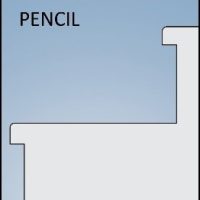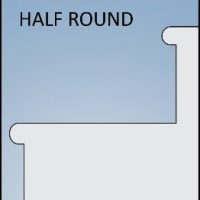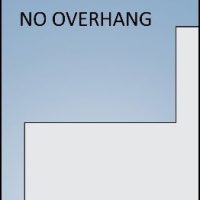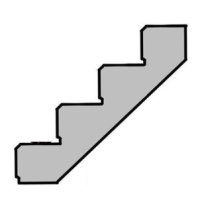In the realm of interior design, every detail matters – even the often-overlooked components like stair nosing. As an integral part of staircase architecture, stair nosing goes beyond mere functionality. It safeguards your stairs from the inevitable wear and tear while adding a touch of finesse to your space.
Picture this: a staircase that not only exudes sophistication but also ensures the longevity of its pristine appearance. Stair nosing achieves precisely that. Beyond its protective role, it plays a pivotal role in enhancing safety by providing improved grip and heightened visibility on staircases.
With the world of interior design at your feet, our guide is here to unveil the various facets of stair nosing. From its diverse types, each carrying its own set of advantages, to the seamless integration into your design vision, we’re your partners in perfecting both aesthetics and functionality. Delve into the world of stair nosing with us as we navigate through its benefits and assist you in selecting the ideal type that aligns with your design aspirations. Your staircase’s grandeur awaits – step by step.
Main Benefits of Stair Nosing
Cost-effectiveness: By integrating high-quality stair treads and nosing, the long-term maintenance of your staircase becomes hassle-free. Bid farewell to the need for frequent replacements or extensive renovations that would otherwise be necessary in its absence.
Safety Enhanced: Stair nosing acts as a safeguard against tripping hazards, fostering improved traction and minimizing the likelihood of slips and falls.
Unmatched Versatility: Installing stair nosing couldn’t be easier, and at places like Stair Rods Direct, you can get bespoke nosing that can easily be cut to fit any type of stair tread. This is especially useful for curved staircases.
Elevated Aesthetics: Constant use of stairs means that the edge of the stair, the most stepped upon part, will wear over time. This wear and tear can mar the overall appearance with unsightly marks and abrasions. Create an impressive visual impression for your staircase while improving safety with the simple addition of stair nosing.
Different types of stairs nosing details and design
Stairs nosing types
Stair nosing comes in several common types, each with distinct characteristics:
Wood stair nosing, the priciest variant, boasts an array of finishes and can be tailored to any staircase. Metal stair nosing, more affordable than wood, offers various finishes and exceptional durability. Lastly, plastic stair nosing, the most economical option, is easy to install and maintain despite being less robust compared to wood or metal alternatives.
Stairs nosing designs
Pencil style nosing

This popular stair nosing design has rounded edges which look like a pencil which has been turned sideways. Pencil nosing is a common option for traditional staircases but can be used with modern styles as well. Pencil nosing has no sharp edges and creates a streamlined look down the length of the staircase.
Square style nosing

This popular stair nosing design has rounded edges which look like a pencil which has been turned sideways. Pencil nosing is a common option for traditional staircases but can be used with modern styles as well. Pencil nosing has no sharp edges and creates a streamlined look down the length of the staircase.
Half-round style nosing

This popular stair nosing design has rounded edges which look like a pencil which has been turned sideways. Pencil nosing is a common option for traditional staircases but can be used with modern styles as well. Pencil nosing has no sharp edges and creates a streamlined look down the length of the staircase.
Full round style nosing

This popular stair nosing design has rounded edges which look like a pencil which has been turned sideways. Pencil nosing is a common option for traditional staircases but can be used with modern styles as well. Pencil nosing has no sharp edges and creates a streamlined look down the length of the staircase.
No overhang style nosing

This popular stair nosing design has rounded edges which look like a pencil which has been turned sideways. Pencil nosing is a common option for traditional staircases but can be used with modern styles as well. Pencil nosing has no sharp edges and creates a streamlined look down the length of the staircase.
Chamfered Stair Design

This popular stair nosing design has rounded edges which look like a pencil which has been turned sideways. Pencil nosing is a common option for traditional staircases but can be used with modern styles as well. Pencil nosing has no sharp edges and creates a streamlined look down the length of the staircase.
How to Choose the Right Type of Stair Nosing
The type of stair nosing you choose will depend on your individual needs and preferences. If you are looking for the most durable option, then wood stair nosing is a good choice. If you are on a budget, then plastic stair nosing may be a better option. If you are looking for a stair nosing that will add to the aesthetic appeal of your staircase, then you may want to choose a metal stair nosing with a decorative finish.
Conclusion
Stair nosing is integral to staircase design, protecting treads, enhancing safety, and elevating aesthetics. With diverse options available, selection becomes personalized. Stair treads, made from materials like steel, wood, and more, require careful consideration of pros and cons. Equally important is the design of nosing, impacting both appearance and safety, encapsulating a comprehensive approach to staircase refinement.
If you’ve reached this stage, we’d greatly appreciate your likes and comments on our blog to share your feedback.